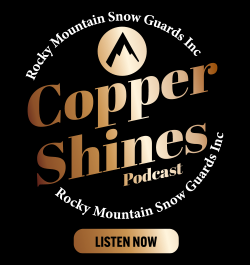How hot is too hot?

By RIDGEPRO.
Tips and tools for beating the heat.
While certain areas of the country remain cool, many regions have been feeling peak summer temperatures for weeks. Men and women who work outside including those in roofing, construction and agriculture accept hot weather as part of the job. Grin and bear it, they say. The work needs to get done.
But, how hot is too hot? Even those accustomed to high temperatures (and high humidity) need to know when to call it a day. Site supervisors, safety officers and company managers must be ready to put safety first and shut down a job rather than continue in dangerous heat. The tough part comes in knowing whether to take a longer break or call off work until tomorrow. Time is money, after all.
In addition to the actual temperature, other conditions including wind, humidity and cloud cover factor in to the real feel outdoors. Also, overall health status and medications can affect the way a worker responds to the stress of working in the heat. Even safety equipment including helmets, vests and harnesses can alter the body’s usual heat shedding mechanisms.
Where OSHA stands
Everyone in the roofing industry should be familiar with OSHA General Duty Clause, section 5(a)(1) that requires employers to provide a workplace free from recognized hazards likely to cause death or serious harm. RIGHT. But what happens when the workplace is on a roof 30’ above the ground and it’s the middle of July?
Thankfully, the courts have interpreted this rule to mean that when a serious hazard is acknowledged by industry standards to be part of the job such as height, then employers must abate that hazard with safety procedures, training, equipment, etc. Heat, because it can result in serious harm or daeth to a worker, is one of those hazards.
In addition, certain states including Califorina, Colorado, Minnesota, Oregon and Washington have developed their own heat standards. Most use a heat index measurement rather than relying on raw temperature to make a judgment about potential heat exposure. The heat index combines air temperature and relative humidity to gauge how heat is perceived by a person’s body. One limitation of the index is that it is calculated for shady areas with light wind conditions and often roofing jobs are in full sun.
OSHA and NIOSH have recently created a geo-specific mobile based tool that takes the math out of calculating the heat index for a worksite. The app is free for download through the OSHA website. The app has a real-time heat index and hourly forecasts specific to your location. The tool is available in English and Spanish.
Signs of heat related problems
| Early | Middle | Late |
|
|
|
Don’t neglect the basics
Even if you don’t yet have the heat safety tool, a good rule of thumb is to assume that raw temperatures of 80 to 94 degrees Fahrenheit are in the warning range with anything over 95 degrees indicating dangerous conditions. Never totally rely on technology to tell you a problem is brewing. Use your own eyes and common sense to evaluate when breaks or a work stoppage is needed.
If your crews must work at temps in the Warning range here are a few tips to help keep them safe:
- Review conditions at every onsite morning meeting. Remind workers to watch out for each other and not be afraid to say: “I’m too hot. I need a break.
- Water, water, everywhere on site. Don’t forget electrolytes such as Gatorade as well.
- Know the signs of heat related problems.
- Don’t wait until a situation is critical to call for a break.
- Call 9-1-1 for heat related emergencies.
Heat can be relentless and doesn’t care if your project is behind schedule. There are no safe shortcuts you can take in this summer’s expected weather. However, with planning and preparation you can beat the heat and still have a profitable summer.
Learn more about The RIDGEPRO® in their Coffee Shop Directory or visit www.theridgepro.com.
About The RIDGEPRO®
The RIDGEPRO is the brainchild of Strawder Family Innovations, LLC, a multi-generational roofing team. Roofers constantly experience “close calls” and this device will surely do something to eliminate them.
The RIDGEPRO was field tested for two years before entering the marketplace. The product’s quality was also verified by a professional testing organization. Quality and safety are important to the company, so they manufacture the product in the U.S. from high-quality, aircraft-grade aluminum.






















Comments
Leave a Reply
Have an account? Login to leave a comment!
Sign In